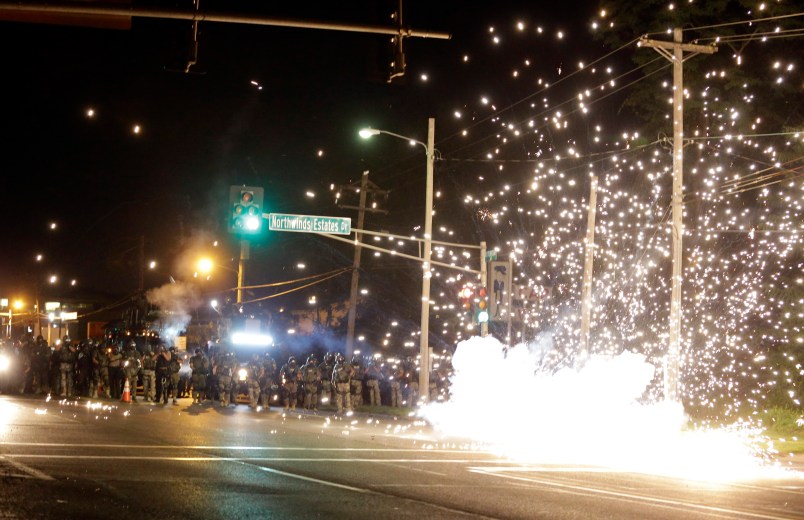In the wake of law enforcement officers using tear gas and rubber bullets against protesters who want answers about the police shooting of an unarmed 18-year-old in Ferguson, Mo., many have openly raised questions of excessive force.
The racially-charged situation has come under the national spotlight as stunning photos surface of police officers armed with military equipment and vehicles using tear gas and rubber bullets against protesters.
But law enforcement experts say that as disturbing as the images look, it’s not clear if local police violated standard procedure used in situations of mass unrest, and likely won’t be until a thorough review is conducted. Most of the demonstrations appear peaceful but some have reportedly turned violent with reports of looting and vandalism.
“In general, police officers in the United States train around what we refer to as ‘continuum of force.’ So that means first you identify yourself as a cop. This should stop individuals from transgressing. Then you ask people to disperse with verbal command. Then if it doesn’t work it escalates to use of force including ‘impact techniques’ and then less than deadly force which includes gas and various equipment,” said Maria Haberfeld, the chair of the Department of Law, Police Science and Criminal Justice Administration at John Jay College.
Richard Lichten, a police practices experts, defended the officers in Ferguson.
“When people start violating the law and looting and vandalizing and start attacking police with molotov cocktails then the police have a right to defend themselves,” he said.
One of the more questionable instances occurred Wednesday evening when police arrested two reporters — Wesley Lowery of the Washington Post and Ryan Reilly of the Huffington Post — at a local McDonald’s after they were ordered to leave and didn’t do so as quickly as the officers wanted them to. Prominent national politicians have condemned the arrests, and at least one police expert thinks they were not warranted.
“Absolutely not. I looked at this and having been a police officer for over 26 years … no, this was not proper at all,” Mike Brooks, a law enforcement analyst, said on CNN. “Number one, when is the police now in charge of closing down restaurants? Was there a threat to this restaurant and were these reporters in danger? It seems that they were not. The manager should have asked them to leave if they were going to decide to shut down that restaurant for public safety reasons. But they were not.”
The reporters were handcuffed, taken to the station and were shortly let go. “You just can’t un-arrest somebody,” Brooks said. “That opens up this department to false arrest, false imprisonment civil charges. I’m telling you that is not the proper procedure at all.”
Haberfeld said there are 18,000 police departments in the U.S. and “many, many modalities of training.” The trouble with the question of excessive force, she said, is that “there are no national standards for training.”
“Use of force is … something that doesn’t look pretty. It looks extremely brutal and violent but what you’re seeing and what I’m seeing is a fraction of what’s going on,” she said. “They are behaving based on the continuum of force. … This is what we authorize police officers to do and some people don’t know that. It’s not unusual.”
The Justice Department has promised a “thorough and fair” review of the events in Ferguson since the killing of Michael Brown on Saturday. The U.S. hasn’t seen clashes between police and civilians this bad since the Rodney King riots in 1992, Haberfelt said.










